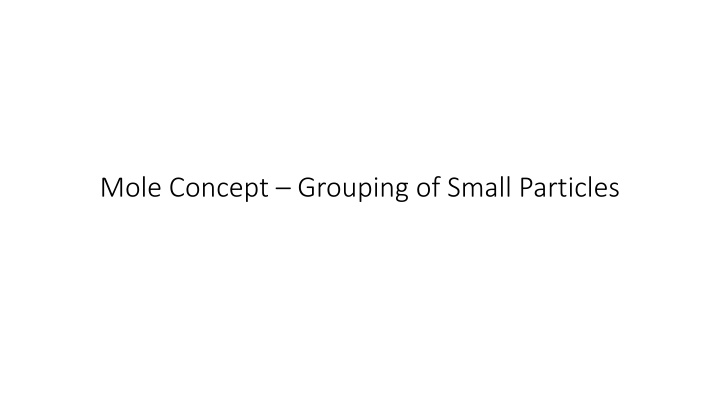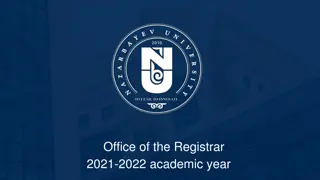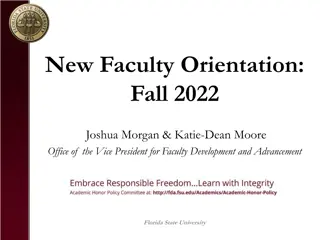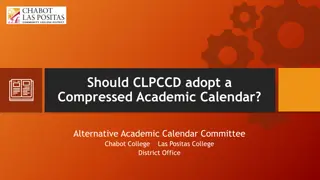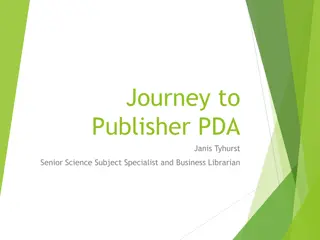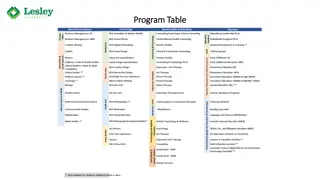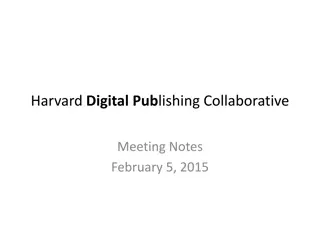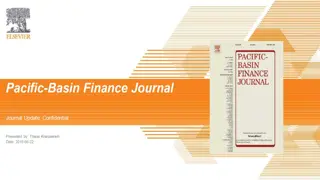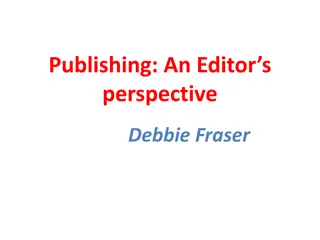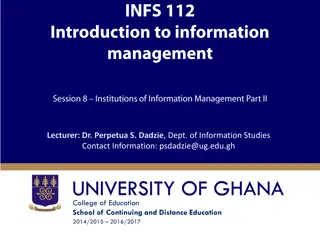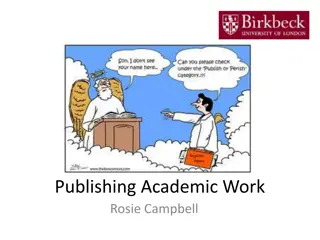Insights into Academic Publishing Strategies and Processes
In academia, navigating the publishing world can be challenging. This content provides valuable insights into strategies, processes, and pitfalls to avoid. Covering areas such as selecting journals, submitting articles, and understanding acceptance rates, it offers practical advice for researchers seeking to publish their work effectively.
Download Presentation

Please find below an Image/Link to download the presentation.
The content on the website is provided AS IS for your information and personal use only. It may not be sold, licensed, or shared on other websites without obtaining consent from the author.If you encounter any issues during the download, it is possible that the publisher has removed the file from their server.
You are allowed to download the files provided on this website for personal or commercial use, subject to the condition that they are used lawfully. All files are the property of their respective owners.
The content on the website is provided AS IS for your information and personal use only. It may not be sold, licensed, or shared on other websites without obtaining consent from the author.
E N D
Presentation Transcript
Why is Mole Concept So Important to Chemistry? Allows Chemists to mass out, count and find volume (gas particles only) of particles that are too small to do the above with individually.
History of the Mole Concept Joseph Louis Gay-Lussac : Law of Combining Volumes: When two gasses react together to form different products, the volumes of the reactants and the products (if they are all still gasses) are all whole numbers. Lorenzo Romano Amedeo Carlo Avogadro de Quaregna e di Cerreto - better known as Amedeo Avogadro: He said that the reason that Law of Combining Volume works is the things in the volume are made up of particles combining simple whole number ratios (both in the reactant and products). Avogadro hypothesis related gas volumes to the particles that made up the volume.
History of the Mole Concept (Page 2) In years since Gay-Lussac and Avogadro, scientist changed Avogadro hypothesis particles from volume measurement to mass measurement. Specifically, scientist knew enough about the elements to be able to explain the RELATIVE mass difference between elements (but not actual mass of element). For example, they knew Carbon was 12X the mass of Hydrogen, etc. But with any Relative scale, to make the relative number ACTUAL number, you need a reference (or basis) point. In other words, one of the Relative mass will have to be DEFINED (reference mass or element). They used Carbon atoms equal 12amu (atomic mass units). Then all the other know elements obtained a mass based off of this mass.
Mr. McLeod Explanation of Mole We knew relative masses between elements Assume that largest atom has 100 protons (p), 100 neutrons (n) and 100 electrons (e). In 1900 or so, scientists figured out mass of all subatomic particles with p&n being 1.67E-23g and e being 9.11E-28g. So if you do the math above, the mass of the most massive atom of an element is less than 1.67E-21g or 1.0E- 21g. So in the FOLLOWING DISCUSSION I WILL ASSUME MASS OF 1 HYDROGEN = !.0E- 21G
Example of Mass to Mole Calculations for Elements. How many grams of Carbon do I have if I mass out 4.35 moles of C ? Dimension Analysis By Equation
Three Mole Equations (Massing) (Counting) (Voluming) Mass to Mole Number of Particles to Mole Volume to Mole (only for gasses)
